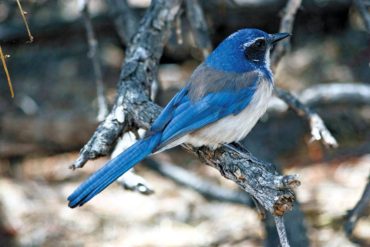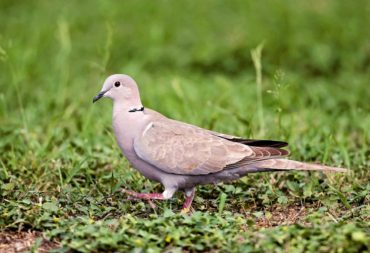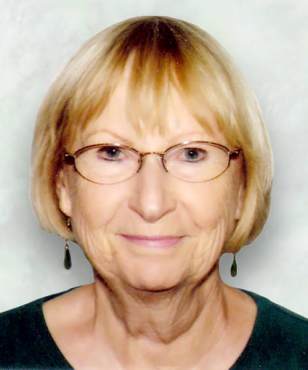
Counting birds in the middle of winter may not make sense but this is a tradition that goes back over a hundred years. It is a tradition that replaced another one known as the Christmas “Side Hunt.”
Before the turn of the century, hunters on the East Coast took part in a competitive hunt as part of the season’s festivities. Sides were chosen and the hunters took to the field. The goal was to see who could bag the most birds or other game. This tradition wasn’t popular with everyone celebrating Christmas. Even back then, some worried about declining bird populations.
Frank Chapman was an ornithologist and a member of the Audubon Society. Even though this organization was in its infancy, under Chapman’s guidance, it introduced what it hoped would become a new holiday tradition. On Christmas Day 1900, the first Christmas Bird Census took place.
Instead of hunting birds, participants would see how many different species they could count. They also tallied how many individuals in each species were seen. Twenty-seven dedicated birders took part in counts that ranged from Canada to California, but most of the counts took place in the Northeast. The final tally of birds counted was just short of one hundred species.
The 117th Audubon’s annual Christmas Bird Count will take place this year. More than 60,000 birders will count birds throughout all of North America. Several West Sound chapters make it possible for interested participants to join in more than one count. The official count period ranges from Dec. 14 to Jan. 5. Local chapters decide the dates that work best for their members to count the local birds.
When the actual counting begins, chapter members and guests will follow established guidelines. Each chapter has its own assigned counting area. These areas are actually circles. Each circle has a 15-mile diameter that is determined by the longitude and latitude of an approved center point. Circles cannot overlap or touch nearby circles. Once established, a circle remains the same every year.

Kitsap Audubon’s circle was officially established Jan. 6, 1974. The same territory surveyed 43 years ago will be counted this year. This year’s count will be on Dec. 16.
Each circle is divided into several zones. Each of these has a leader responsible for the counting of birds in the assigned zone. Participants share in spotting, counting and recording the birds seen. They keep a list of the bird species they see and the numbers. They also record other information such as weather conditions, i.e. wind, rain, fog and snow. The record includes when their counting began and when it ended as well as the number of participants.
Many counts begin before daylight. Where it is possible to see owls, counting can begin in the middle of the night, any time after midnight. Great horned owls, Western screech owls and saw-whet owls are frequently added to tally sheets. One owl is hoped for during those years when conditions cooperate. When an eruption of snowy owls leaves the Arctic, small numbers can move as far south as Western Washington
The shape of the Kitsap Peninsula has frustrated those taking part in the Christmas Count. This is a long, narrow piece of land. Placing a circle on it where the most birds and bird species can be seen was a challenge. The most northern part and the most southern part are never counted and both areas offer some of the best birding on the peninsula.
This year, Kitsap Audubon will add a second circle to its chapter’s count efforts. This was tried several years back and the official circle was established. However, participation dwindled away and the effort died out. This year, Kitsap Audubon plans to count this second circle, which covers the northern part of the county. This region is famous for rare and unusual bird sightings. It is known as the North Kitsap-Port Gamble Count.
The Christmas Bird Count is more than a social outdoor event. It has been referred to as “an enormous undertaking in citizen science.” The data collected in this wildlife census assesses the health of bird populations and helps guide conservation efforts for different species. Today, there are birds being counted on Kitsap Audubon’s annual count that weren’t recorded for this county in 1971. The Western scrub-jay and Eurasian collared-dove are two of these. A lone bald eagle was an exciting event on those first counts. Now, this bird’s numbers are an example of what successful conservation management has accomplished.
Once this year’s North American Count ends on Jan. 5, the data collected will be compiled, edited and entered into the “Christmas Bird Count Database.” This database contains an enormous amount of information on the status of North America’s bird population. The 60,000 people who participate in about 2,000 circles count almost 55 million birds.
Even though the weather can be a problem over much of North America during the winter, this time period was chosen because the birds are static on their wintering grounds. They aren’t moving from one region to another as they do during migration. Many species gather together in winter flocks, making it easier to get a good picture of their population.
When birds are nesting, they are scattered over a much larger area or are in places difficult to access. The bird population also reaches its peak numbers in early winter while most of the young raised the previous spring still survive. The comparing of previous winter populations provides a picture of the health of the various species.
When counting multiple birds, some of which are in large flocks, the more eyes looking and the more people counting means more birds will be seen and counted. Guests and visitors are welcome. Count coordinators tallying each zone’s numbers hope for the highest count possible.
The goal is to reach over 100 species and add as many above that number as time will allow. Last year, Kitsap Audubon’s Christmas Bird Count tallied 125 different species and almost 20,000 individual birds.
More information on both of these counts and how to participate is available at www.kitsapaudubon.org.























Comments